The Functioning Of Solar Energy
How does it actually works?
If you’re considering installing a solar panel at your location, you’re probably repeatedly pondering the most common question: How does it work? How does it capture the sun’s energy and generate electricity?
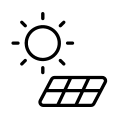
SOLAR PANELS

INVERTER

ISOLATER

POWER METER

DISTRIBUTION PANEL
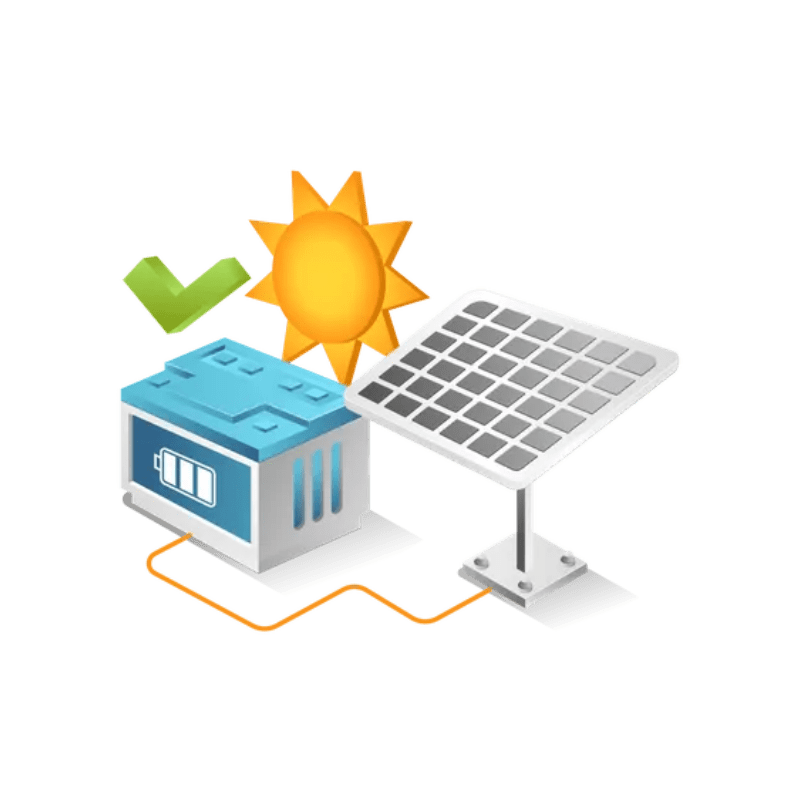
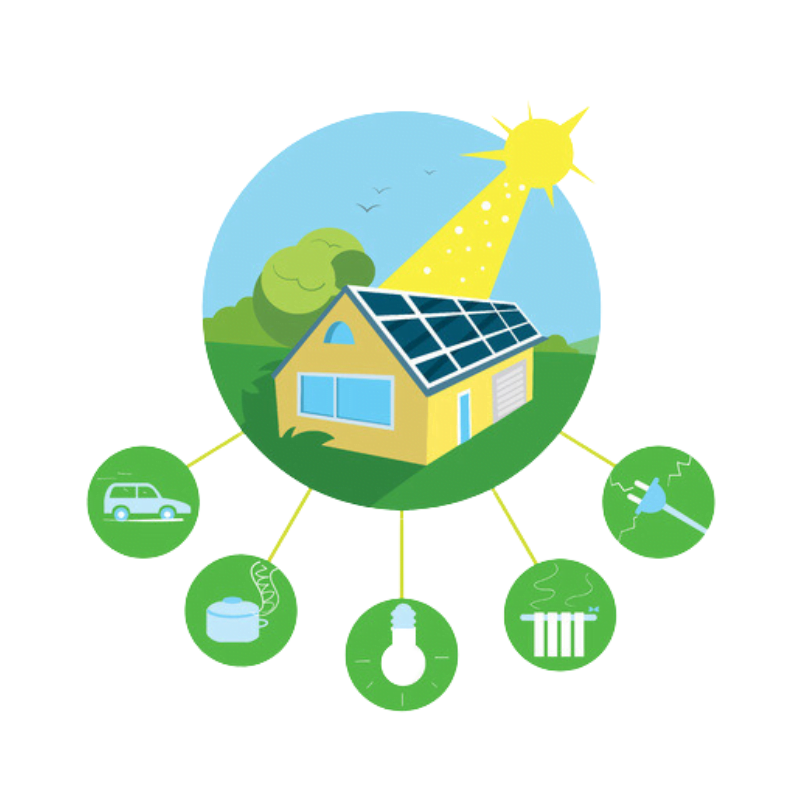
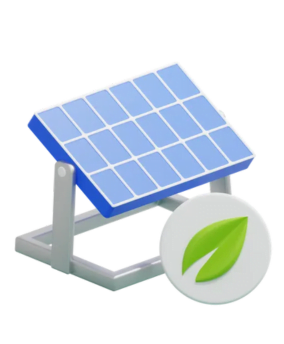
How Solar Energy Works?
Solar panels, alternatively referred to as Photovoltaic panels, solar modules, and Photovoltaic modules, harness sunlight by absorbing photons, generating an electric field across their photovoltaic cell layers, and thereby generating electricity. This electricity is then utilized to power households.
The photovoltaic effect makes this achievable. “Photo” from Greek signifies ‘Light,’ while “Voltaic” denotes electricity generation. This not only leads to significant savings on electricity expenses but also contributes to environmental preservation. Solar panel-generated power leaves no waste, ensuring complete safety.
1
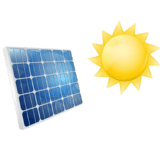
Solar Panels – Capturing Sunlight Rays
When sunlight’s photons hit the solar panel, electrons within the photovoltaic cells become energized, initiating a flow that generates an electric field, producing raw electrical power, also recognized as direct current (DC) power. Constructed from high-quality silicon material, solar panels rely solely on sunlight for operation.
2
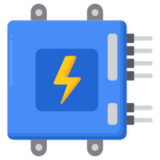
Inverter – Conversion Of DC Power Into AC Power
The power generated is in the form of DC power. However, since most household appliances run on Alternating Current (AC) power, an inverter is necessary to convert the DC power into AC power, aligning with household needs. This AC-DC inverter operates automatically, deactivating at night and restarting when sufficient sunlight is available.
3

Isolator – Protection From Over Currents
An additional AC Isolator Switch is essential for linking the Solar Power System to the current infrastructure, safeguarding equipment from potential damage caused by overcurrents originating from a faulty inverter.
4

Power Meter – Net Metering
The converted DC power is transmitted to your home and integrates with the AC power provided by the local grid at the Home’s Main Meter panel. Typically, older power meters are replaced with new bidirectional digital power meters known as Net Meters during the installation of a solar power system. Consequently, the home functions as a miniature grid, generating its own electricity and potentially supplying excess power to the local grid. Net metering monitors the net electricity inflows and outflows throughout billing cycles. Customers are billed for the electricity they consume, subtracting any surplus power sold back to the local utility company.
5
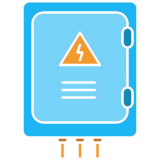
Distribution Panel – Electric Power Delivery
Electric power is delivered to the home via the existing wiring system, illuminating the household and powering essential appliances such as the AC, washing machine, and refrigerator. Installing a Solar (PV) energy system at your residence will generate clean, environmentally friendly, and sustainable energy, significantly lowering your energy expenses.
FAQ
What are the reasons for choosing solar energy?
The allure of solar energy lies in its myriad benefits compared to conventional energy sources. Explore some of the most popular reasons below to determine why you should make the switch to solar.
1. Financial Savings: One of the most significant advantages of solar power is the potential to save money on your monthly electricity bills. Compared to your current expenses, solar energy typically results in considerably lower costs. This is due to solar production offsetting what you would otherwise purchase from the utility company, resulting in substantial savings.
2. Environmental Responsibility: Adopting solar power means embracing clean, green energy. By going solar, you actively contribute to a greener environment and reduce your carbon footprint.
What is the cost?
Solar energy is significantly more affordable than traditional methods of generating electricity. You have the choice between paying upfront in cash or exploring financing options. Don’t hesitate any longer—make the switch to solar today.
What is the process behind it all?
The process of solar power generation is straightforward. Small silicon cells within solar photovoltaic panels capture sunlight and convert it into electrical current. These panels are interconnected to form an array. The electricity generated by this array is directed to the inverter installed on your property, where Direct Current (DC) from the array is transformed into Alternating Current (AC). This AC electricity powers your systems. Any excess power generated is sent to the electricity grid.
Is my property suitable for a solar power system?
Solar power is viable in nearly any location. The primary determinant of solar power generation is the amount of sunlight received by the specific location. Another crucial factor is the available ground space or open roof area. Synergy Solar will conduct a thorough assessment of your property during a complimentary solar evaluation visit. Our specialists will inspect your property and determine the optimal size of the solar power system tailored to your individual and financial requirements.
Is it advisable to hold off for a new solar technology?
To be frank, it’s a resounding no. The present moment presents an ideal opportunity to harness the advantages of solar power, especially with the availability of substantial subsidies and incentives. Opting for solar power now with Synergy Solar enables you to access various solar panel options. Upon contacting us, we’ll keep you informed about the latest advancements in solar power and provide them to you when they become both reliable and cost-effective.
Which system size would be most suitable for me?
Every solar system is customized to meet specific requirements; there’s no one-size-fits-all solution. The key factors we consider when determining the system size include the energy requirements, available ground or roof space, and budget. We’ll create a precise custom proposal for you, allowing you to decide which option best fits your needs.
What are the payment options for solar?
There isn’t a single “best” option. Instead, there are numerous options available to choose from based on your preferences.
Will solar require maintenance?
As solar panels have no moving parts, they require minimal maintenance. One way to upkeep your solar panels is by minimizing shading, and seasonal rainfall usually keeps them clean. Furthermore, solar panels are excellent heat absorbers, melting snow effectively.
Solar panels are highly resilient and durable. At Synergy Solar, we utilize top-quality PV panels from reputable manufacturers that undergo rigorous testing. Additionally, we offer workmanship and performance guarantees. In the unlikely event of a system component failure, we will replace it free of charge within the specified timeframes.
We also provide solar Annual Maintenance Contract (AMC) packages for ongoing system maintenance and monitoring. Our service team monitors your system’s performance to ensure optimal functionality. If the output falls below expectations, we promptly address and rectify any issues. Moreover, our service package includes extended warranty and warranty repairs, covering the cost of any necessary repairs or replacements.
Can solar power be relied upon and is it durable in the long run?
Absolutely. Solar power systems have such remarkable longevity that even those installed 50 years ago continue to operate today. Newly constructed solar systems are equally dependable, designed to maintain at least 90% of their initial power output over a 25-year period. Solar panels typically come with manufacturer warranties ranging from 20 to 25 years, while inverters carry warranties of 5 to 10 years. Furthermore, at Synergy Solar, we provide a minimum 10-year warranty on installations. Solar systems often outlast their warranty periods, and advancements in efficiency and cost reduction over the past 5 years have made solar an affordable and secure investment.
What solar panels do you offer?
We provide top-of-the-line products meticulously tested to meet the highest standards. Our recommendations for panels and equipment are tailored to each individual case. Our solar panels are cost-effective, readily accessible, and backed by exceptional warranties.
What will happen in case it’s dark or cloudy?
We consider this factor during the installation of the solar power system. The system generates maximum power in direct sunlight and slightly less power on cloudy days, with no production at night. Our solar power system is engineered to maximize power extraction during sunny days and utilize it during cloudy or rainy weather. Additionally, the system seamlessly connects to the local utility grid, ensuring uninterrupted power supply without any disruptions.
What will happen when power goes out?
In the event of a power outage, the solar power system automatically shuts down. According to regulations, any solar power system without a battery backup must deactivate until power is restored. This measure serves as a safety precaution, averting potential injury or damage caused by power surges.
What happens at night?
The basic concept of solar power is the use of sunlight hence no power is produced at night. The servicing utility will supply electricity at night.
Is the switch to solar power difficult?
Not at all. We take care of everything including all the approvals, equipments, installation and the paperwork. We make sure that you start saving on your money through our installed solar power system right from the first day of installation. There would be no visible changes in your surroundings except for the reduced power bill.
How long does solar system take to get started?
It depends on the type of system installed. A residential installation takes about 5-10 days to get started while an agricultural or small commercial installation takes around 4-6 weeks to get started counting from the day of installation. The duration of the project depends on the complexity of the property and the system size. Synergy Solar will take into account the estimated installation time in your custom designed proposal.
How does the installation process look?
We assign a dedicated Project Manager to each of our customers, who will serve as your main point of contact throughout the project. They will schedule a Kick-Off meeting to initiate the project and will oversee tasks such as obtaining approvals, filling subsidy applications, and completing structural reviews. This entire process typically takes 1-2 months, but your Project Manager will ensure a seamless and stress-free experience for you, setting us apart from our competitors.
Once the approvals and paperwork are completed, our team of installers and electricians will proceed with installing the system. Local inspectors will then verify if the system meets the required codes and standards. It is the responsibility of the Project Manager to coordinate all necessary inspections following the system installation.
After the inspections are completed, we will submit an application for final interconnection approval to your utility company, which may take up to 45 days. Upon receiving approval from the utility company, an official will install the net meter, and your system will be ready to power up!
Can solar panels produce electricity during a power outage?
The solar system remains linked to the local utility grid at all times. Solar installations are furnished with a specialized safety feature that automatically deactivates PV systems during power outages.
How long is the payback period?
The payback period varies depending on the system you select. For a no-money-down option, immediate payback can be expected. If you opt to purchase your system, the payback period typically ranges from 5 to 9 years and is influenced by several factors:
1. Clean energy generation: The amount of clean energy your system produces is determined by the level of direct sunlight it receives and its size.
2. Grid electricity prices: Shorter payback periods are observed in regions with higher utility rates. Higher utility rates result in greater savings.
3. Total installation cost: Solar system costs are influenced by size. However, these costs can be reduced through state and local subsidies and grants.
How much energy is produced?
The energy output is determined by the intensity of sunlight, as well as the efficiency of the solar cells, the size of the solar panel, and the sunlight exposure. Your Synergy Solar consultant will collaborate with you to determine your energy consumption needs.
What about adding solar panels later?
While feasible, this process can become intricate over time. Inverters and solar panels are engineered to be assembled together in approved configurations specified by manufacturers. There is a precise number of solar panels that should be configured with a specific inverter. To expand the system’s capacity, a mini system consisting of additional solar panels and inverters is necessary. It’s recommended to oversize your system to ensure you have sufficient electricity for future needs.
What does Net Metering entail?
Net metering serves as a solar incentive accompanying the installation of a solar power system. The process involves the installation of a bidirectional meter by your utility company alongside your solar power system. This meter measures both the electricity you consume from your utility and the surplus electricity you export back into the grid. Through this mechanism, any excess power generated can be sent back into the grid, and you will receive the full retail value for that electricity. At the end of each billing cycle, you are credited for the “net” difference between the electricity used and sent. If the electricity sent exceeds the amount used during a single billing cycle, you earn credit towards your next bill. One significant advantage of net metering is the potential to earn negative electricity bills, thereby accelerating the payback period and increasing the returns on your solar investment.
What about the voltage of a solar panel?
Individually, the voltage of a single panel falls within the range of 20 to 60 volts. However, when interconnected, they collectively exhibit an open circuit voltage ranging from 200 to 400 volts.
How is Synergy Solar unique?
Transitioning to solar power is a significant and lifelong commitment. Your solar installers will be with you every step of the way, providing full support even after the system is installed. While there are numerous options available in the market for solar installers, Synergy Solar Solutions is proud to say that we know how to execute solar projects correctly.
